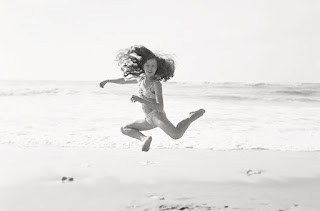Dancing with John Dewey
This week I have been doing a lot of reading: Learners, Learning and Educational Activity (Judith Ireson), Theories of Childhood (Carol Garhart Mooney) and Educating the Reflective Practitioner (Donald A Schon). Through this reading my thoughts have been centering on my own practice as it relates to theories of education. I have been a ballet instructor for well over 25 years and always taught children and young adults of various ages. Recently, I have also started working with a different group of learners composed of college students who are studying to become dance teachers. As I am currently spending a great amount of time with this specific group of students, I have found myself drawn to the writings of Dewey, Vygotsky, Montessori and Piaget and wanting to apply their theories of reflective practices and progressive education to the test with a more mature audience.
For the sake of this blog I will
concentrate on John Dewey and especially on his belief that education should be
active and interactive. Children learn most readily from experience and from my
own experience I have realized that, so do adults from all ages. John Dewey
understood this when he asserted, “Action is the test of comprehension”. To
learn by “doing” and to act on knowledge is the basis of kinesthetic learning.
As a dance teacher I have certainly witnessed the validity of John Dewey’s
words and the dance studio seems to be the perfect testing ground for his
theory.
Taking our students to the next
level of expertise is our never-ending challenge and to do so we must stand
true to the principles of technique while also be willing to explore new
methods that ensure that learning is a happy and successful experience. John
Dewey believed that in order to provide such a positive learning experience, teachers
must “have a strong base of general knowledge…invest in observation, planning,
organization and documentation”. How can we take these recommendations and implement
them in order to increase our effectiveness as dance instructors? Assessing our
work in the dance studio and testing new approaches based on the feedback
received from the students could be a start. Indeed, when based on solid knowledge,
reflective practices are an open door to a fresh and renewed teaching
experience.
For myself one small way I
attempt to accomplish this is by keeping mental and written notes on each of my
students while they practice, perform and interact in the dance studio. When
the opportunity arises, I find it also most helpful to observe my students
being taught by someone else. Thus, by observing without being involved I
always identify some new details that I had missed before. By the same token, I
also ask my students to keep ‘correction notebooks’ so that they too can track and
record what is happening in the dance studio. Once a month we sit down and
share our notes. This exercise takes time, but I believe it is time well spent as
students learn to focus on details. During
these “cross examinations” we analyze and scrutinize their work which helps us find
out which skills and knowledge have been acquired or neglected. For all of us, it is a time of review resulting
in areas of competency being taught anew, connections being made and revised
goals put forward. It is also a time of interactive and practical exchanges
during which I play the role of facilitator/coach instead of that of a teacher
thereby letting the students alternately lead the conversation. These real-life
experiments which require independent thinking, help the students assert themselves
and learn from one another. They are powerful tools which help me learn as much
as my students do about which skills and areas of learning have been mastered,
or not. I like to think of them as my “epistemological mirrors.”



Comments
Post a Comment